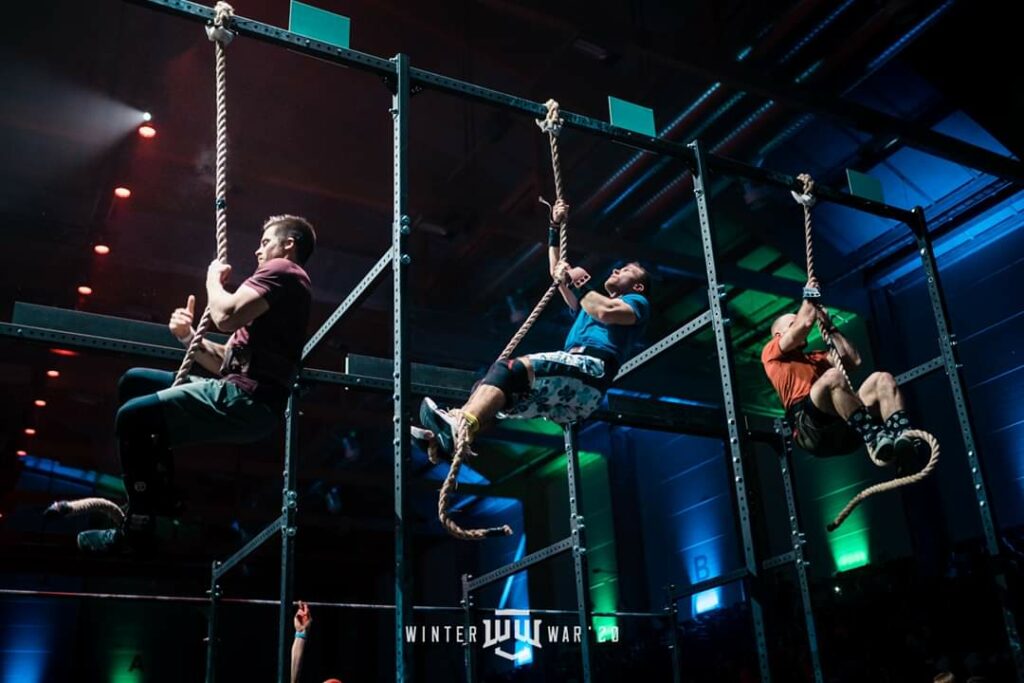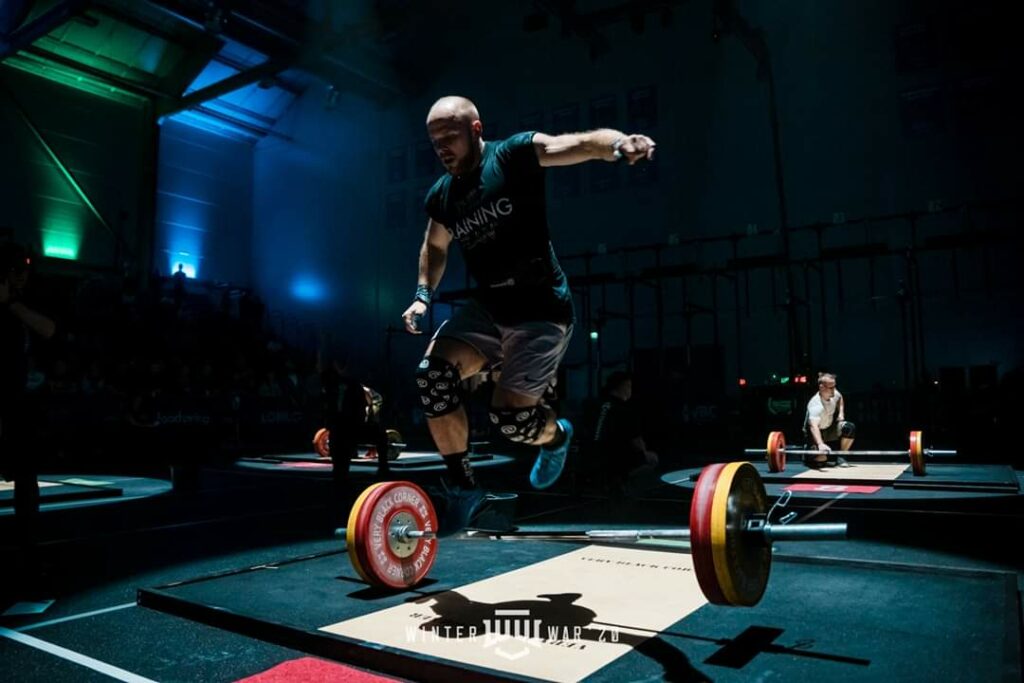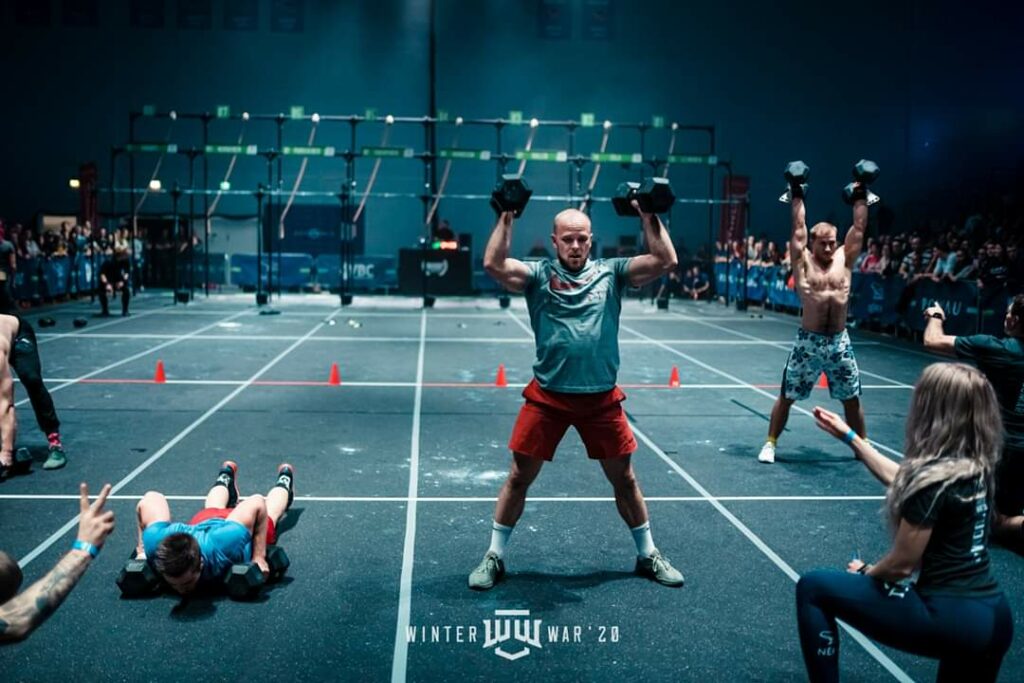This is the 3rd and last article of this 3-part Basement Blog series, that encompasses the fundamental understanding of CrossFit, physical activity and well-being, together with training performance. Writing these texts has been worthwhile, because at least I have learned a lot, and I hope you have as well. The advice, suggestions, and quick fixes presented here are in fact quite simple and logical, but without proper guidance, it is easy to remain in the same wheel for too long. Many of the examined challenges I have experienced personally, of which some are still under progress.
I want to thank you Neea, for assisting as a sparring partner in the creation process of these articles, it really helped a lot.
The 3rd Article: Stagnated development and Sport-Specific training
In this article, we are back to CrossFit again, and we will focus on performance development and how to “think outside the box” in terms of training modality. Doing research, I realized that this subject is way too wide to comprehensively get into a short article like this. Therefore, I had to limit the content to the reasons behind stagnated development from a physical performance viewpoint and how to extend the diversity of your training in order to strengthen your body more holistically.
I repeat once again, the things presented here is my personal understanding of things, and how I look at them. You may see it in another way and you are free to choose whether to pursue the advices given, or not. I believe there are several paths that lead to the same end result, and these things are only the very basics and not some overly complex experiments.
Did you know that CrossFit was originally started as a General Physical Preparedness Program i.e., a training methodology that would prepare you for any kind of activity or sport? During the last decade, CrossFit has actually become more of a “sport” itself, with the CrossFit Games and competitions all over the world. But is CrossFit today performed as a sport, or as a general physical preparation? Are you performing CrossFit to become better at something else, or to become better at CrossFit? I believe the answer varies depending on who you ask.
(Non)-Sport-Specific Training
CrossFit has on many occasions been considered as the Non-Sport-Specific substitute training method that improves your capacity in your primary sport. But what if you are a CrossFit athlete? Should you go by the same rules as for the athletes of other sports?
“Sport-Specific” is first of all not a very well-defined term, and you might find different explanations from different sources. Either way, let’s say that “Sport-Specific”, in the general context of CrossFit, is the CrossFit Open, where you can measure your performance globally and compare it with other athletes. What do you need to do, to place better or improve your scores from the previous year? Some would say: Do more CrossFit, which is partially correct, but not necessarily the most leading advice.
If “Sport-Specific” indicates driving a Formula 1 car in a Grand Prix, playing the Super Bowl, or compete in the CrossFit Open, what should you then do in order to become better? Both the Formula 1 driver and the American football player must maintain stamina, full-body strength, agility, and focus although they perform totally different activities and have totally different body aesthetics. Even if these characteristics are not distinctive/visible for the outside spectator, a great effort has been made behind the scenes to achieve the outcome which facilitate “Sport-Specific” capacity. Such training that is not directly associated with the sport, can be called “Non-Sport-Specific-Training”
.
For the general CrossFit athlete, doing the same stuff over and over again is not very conducive to progress. Affiliate programming’s should aim to support the athletes holistically as good as possible. Almost all the movements in CrossFit are either measurable or testable, which enable perceptible progress. But how about the exercises that are neither measurable nor testable? Are those pointless and should be forgotten or may there be an opportunity to broaden the perspective of training? It has been considered that by extending the training diversity beyond “normal CrossFit modality”, the results can be extraordinary.
At CrossFit Basement, the training-cycle of summer 2020 was highly emphasized by functional bodybuilding, an approach to training that helps increase strength, correct imbalances, improve movement quality, and gain comfort and confidence in a variety of positions. By performing tempo-movements (eccentric/concentric/isometric) together with unilateral load exercises, such as rubber resistance band- and single arm/leg dumbbell movements, you can improve stabilization and support in foundational muscle groups (shoulders/midline/joints), which holistically will improve your fitness. Even though similar movements are not seen in the CrossFit Open, this type of Non-Sport-Specific training will however assist the progress in weightlifting and gymnastics.

Stagnated development
Quite probably everybody has sometimes felt that “nothing is working” or they have not seen progress in a movement for a long period of time. The reasons behind this feeling are numerous and usually individually dependent. A common belief many people have is that they are not training hard enough, which in 9 times out of 10 is incorrect. Harder ≠ Better. Think instead, how can I train smarter in order to become better?
I have listed below a few common reasons to why people’s development is stagnating:
You are focusing too much on what people around you are doing, and you reflect your own results based on others.
-
- Value your own effort, your own progress, your own achievements. Compare yourself only to you, and not to “the neighbour”.
You are training without a significant target, your own target.
-
- Without a plan is like navigating without a map and compass.
You are not training progressively.
-
- Progress will eventually come to those who possess patience. There are no shortcuts.
- Listen what Arttu says about Double Progression in an earlier post at Basement Blog.
You are not utilizing the potential of 1 % incremental self-improvement, that is generally gained outside the gym.
-
- Sleep schedule, diet, mobility, recovery (things you can get 1 % better at)
- Read the 1st and 2nd article about mindset/sleep/nutrition/incidental activity.
The more you can correct, or get above mentioned aspects in order, the easier you are going to experience progress (probably/hopefully). These aspects concern everybody, but are especially important to new CrossFit athletes, since they tend to learn from the “more experienced” athletes example. It is important to stay on your own development path and advance in correlation with your own progress. PR’s are always nice to achieve, but it is totally hazardous to try something you are not ready for. Be patient and consistent in your training, and your time will come.
Another possible, read: probable, reason to stagnated development is the absence or imperfection of Mechanics – Consistency – Intensity. I believe you can only do so good with a crappy technique. Usually, people do not have the patience to fundamentally master these areas properly, before advancing to challenging weights. It is natural for people to want the progress straight away, not next week/month, RIGHT NOW, but they usually end up shooting themselves in the foot by not acquiring a proper foundation that is significant to enable progress, without injuries. The definition of Mechanics, Consistency, and Intensity you find below:
Mechanics: refers to technique – your ability to move yourself and external objects in the most efficient, effective and safe manner possible.
Consistency: refers to both performing the movements consistently well and consistently often. Show up often and train correctly.
Intensity: Once you have mastered a skill you can then add speed, distance, and load to increase your capacity. Do it right then do it fast.

Recently at the TB12 podcast, Mat Fraser told that for the first months of his weightlifting career, he was only allowed to use a broomstick for lifting. After he had mastered the broomstick, he was allowed to advance to the 7 lb. steel pipe, and so on. By mastering the mechanics of Olympic weightlifting, Mat feels he has had an advantage over his competitors in terms of speed and efficiency in barbell cycling workouts.

The Challenge
The takeaways from this article should, as from the previous ones, be concentrated on improving your own well-being in terms of things that you can be 1 % better at. Once again, it does not matter whether you are a rookie or a masters-veteran to CrossFit, it is not too late to learn new things and improve the old ones. Establish a 4-week schedule that you follow consistently.
I would like you to take a moment to reflect over your current mindset of your CrossFit training, and see whether there is any potential for improvement. Primarily, this incorporates improving your general level of fitness, within the sport of CrossFit. However, it could also include a plan on how to get your first Ring-/Bar Muscle up, or strict handstand push up. The key point is to start fundamentally. Analyze the required characteristics of certain movements and be consistent as you progress systematically.
Challenge examples:
- Consider all the things you can become 1 % better at, that will benefit your progress.
- Show up motivated and prepared to every CrossFit-class and always make your best effort.
- Establish 1 or 2 targets you want to achieve before the summer and design a Game Plan.
Sources
Breaking Muscle – CrossFit Makes You Better at Your Sport – Even Pro Athletes
Formenti. D, et al. – Perceptual vision training in non-sport-specific context: effect on performance skills and cognition in young females
Legion SC – Non-Sport Specific Movements for CrossFit
Opex Fitness – What is Functional Bodybuilding?
Pure Lifestyle – Sport Specific Training: What does it mean and is it beneficial?
Thank you for reading, and feel free to reach out to me at the gym or through social media.
Good luck in the CrossFit Open!
